Wildcat Cartridges
.375 JDJ
column By: Layne Simpson | October, 20
.jpg)
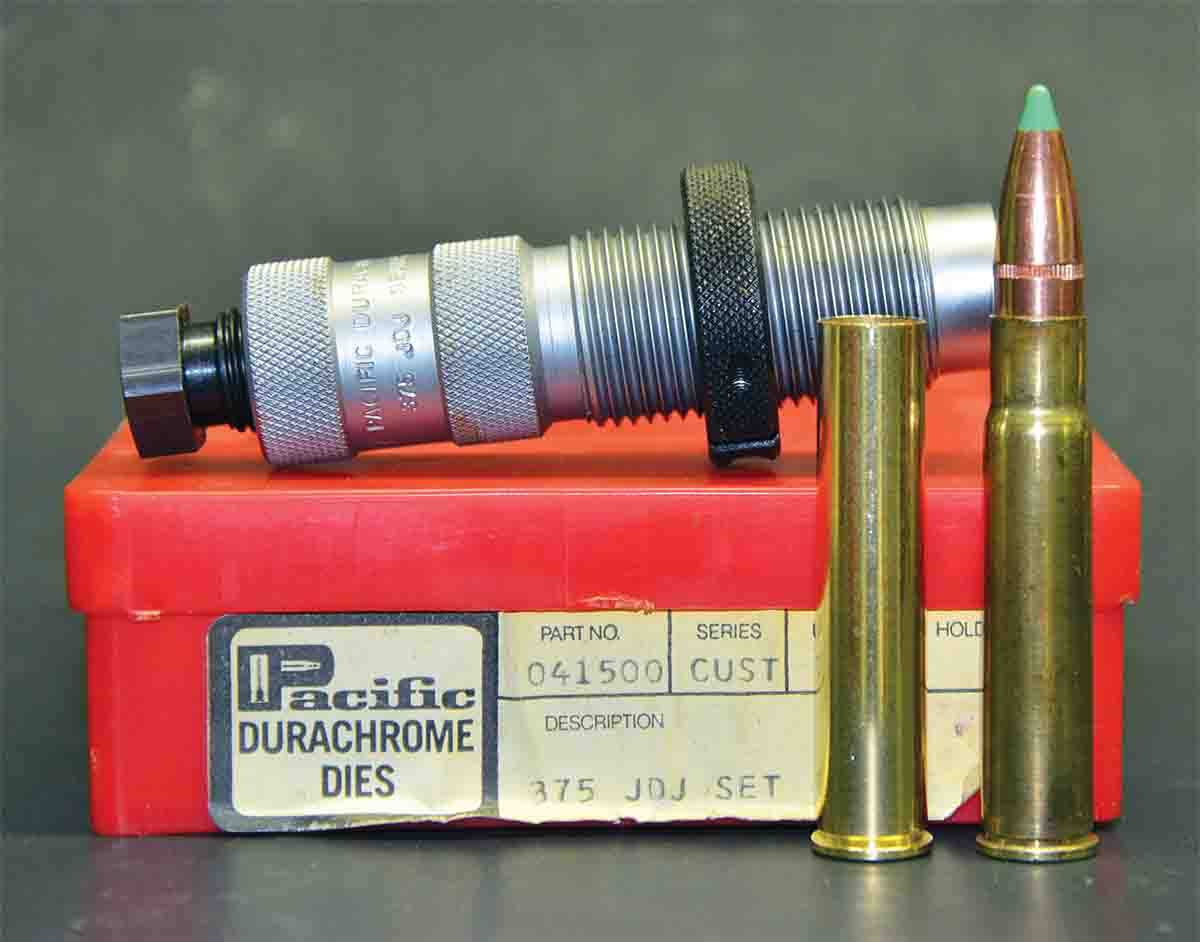
Mention “improved” and the first thing most shooters think of is higher velocity due to an increase in powder capacity. Blowing out the .444 Marlin case to the JDJ shape increases its capacity by less than four percent, so velocity gain over simply necking down the case is slight. But there is another more important benefit. As experiments performed many years ago by P.O. Ackley revealed, decreasing the body taper of a case decreases its thrust against the locking mechanism of a firearm because, during firing, it does a better job of clinging to the wall of the chamber than a cartridge with considerable taper in its case. This assumes the case and the wall of the chamber are dry with no trace of oil or other lubricant.
I have been shooting the .375 JDJ since the 1980s, when only Remington made .444 Marlin cases. The relatively low chamber pressure of the cartridge, along with occasional annealing, has kept most of them going to this day, but they are gradually being replaced by .444 cases made by Starline. The base of that case measures .467 inch in diameter compared to .464 inch for the Remington case. The larger base presents no problem for my SSK barrels in .375 JDJ, .358 JDJ and 8mm JDJ, but it won’t work in the tighter chamber of my .309 JDJ barrel. For that barrel I have more than enough Remington cases remaining.
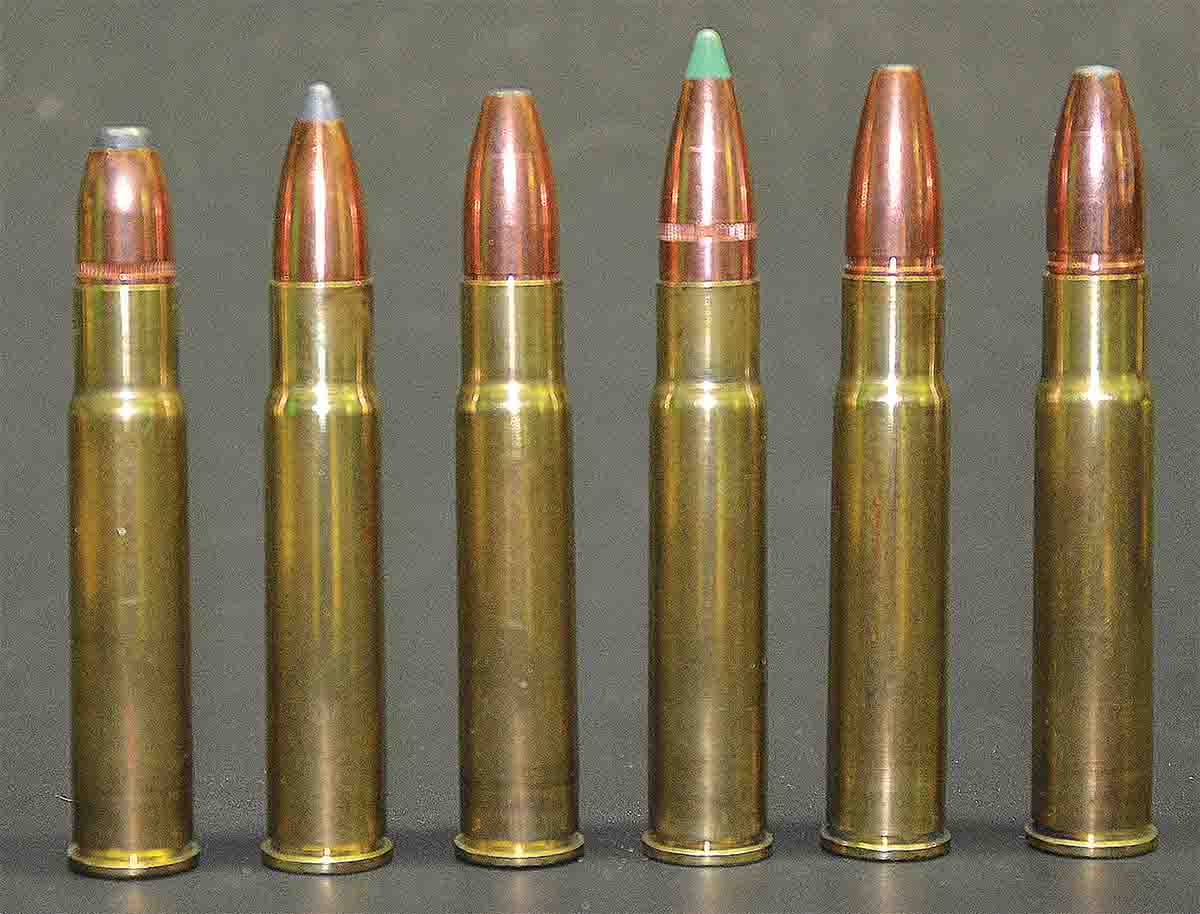
As propellants go, A-2520 ranks high among the favorites of J.D. Jones. When loading bullets weighing from 200 to 260 grains, I have burned more H-322 than anything else. It meters nicely from a good powder measure, burns cleanly in a 14-inch barrel and muzzle flash is mild during early morning and late afternoon low-light conditions when game movement is often at its best. H-4895 and IMR-4064 deliver slightly higher velocities with a 300-grain bullet, but I seldom load bullets heavier than 260 grains so H-322 is the powder for me.
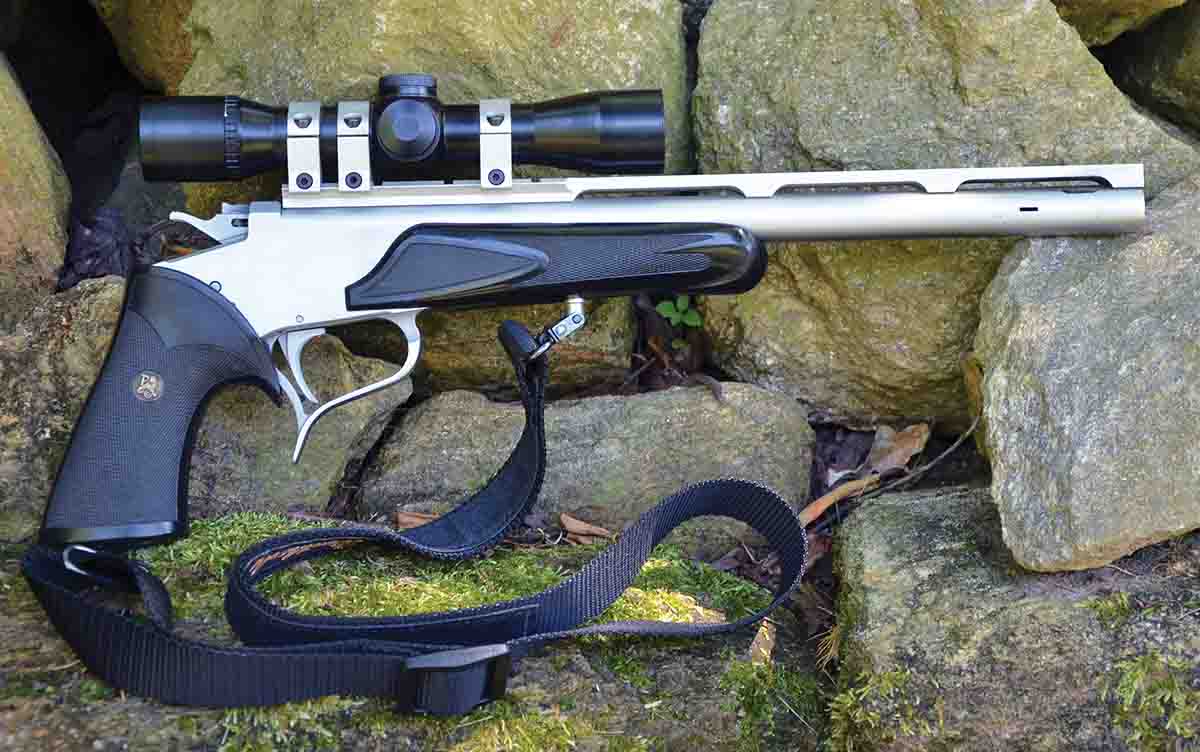
In the hands of J.D. Jones and others, the .375 JDJ has been used successfully on all North American game. Moving to the African continent, it has accounted for eland, elephant, Cape buffalo, hippo and other game. When hunting the big stuff of Africa, I’ll stick with my rifle in .416 Rigby, but I have used the .375 JDJ to take several whitetail deer and find the 200-grain flatnose bullet made by Sierra for the .375 Winchester to be quite effective. I have bumped off more feral hogs than deer with the cartridge, and while the Sierra 200-grain bullet works nicely on lung shots, they sometimes drop more quickly with a side-on shot through the shoulders with the Sierra 250-grain SBT, the Swift 250-grain A-Frame or the Nosler 260-grain Ballistic Tip. I have not tried the Nosler 260-grain AccuBond on anything tougher than paper, but it will likely work equally well. It, along with the 250-grain Sierra and Swift bullets and the Nosler Ballistic Tip, should also be excellent performers on larger game such as moose and elk.
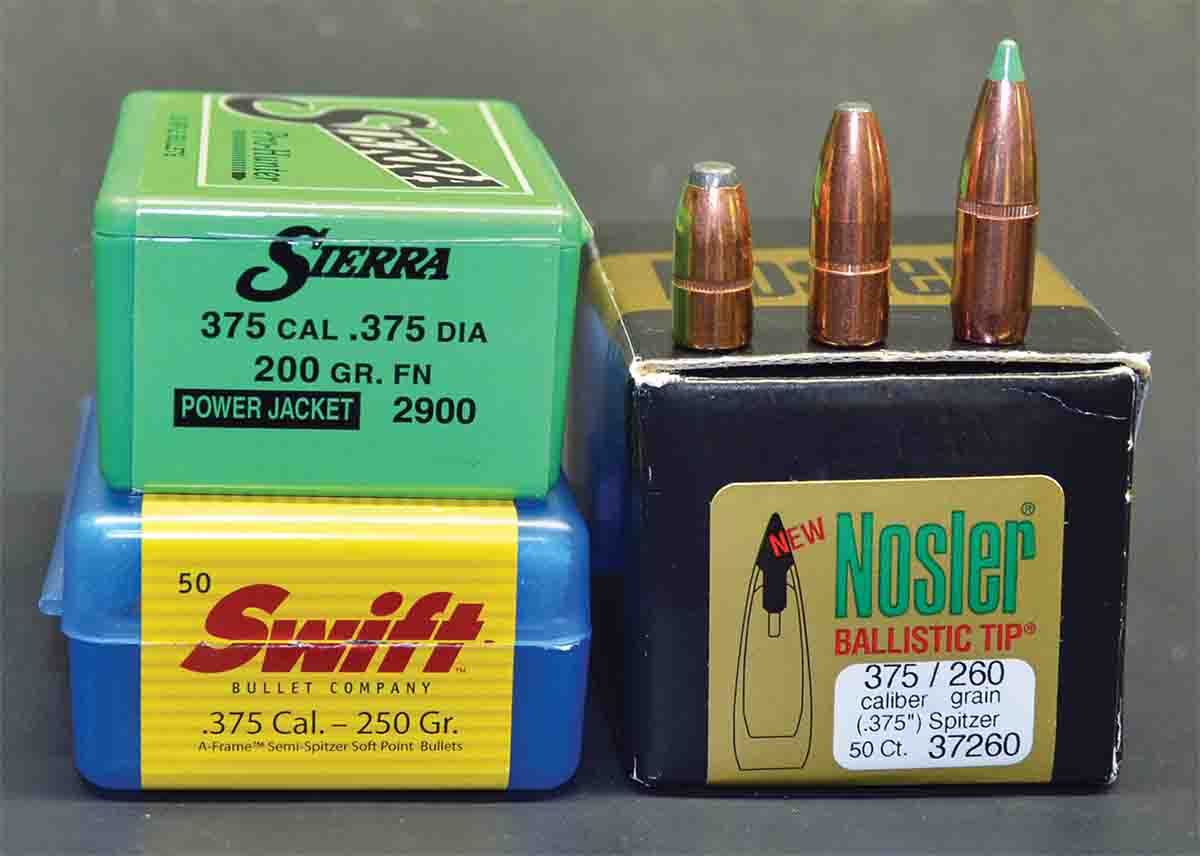
During firing, a rifle recoils against the shoulder while also delivering shock to the cheek, which is one of the more sensitive areas of the human body. In other words, the body receives a double-whammy when a .444 or .45-70 round is touched off in a rifle. Not so with the Contender; as it recoils in its upward arc, the arms add weight to the gun, and as they bend at the elbows the arms serve as very efficient shock absorbers. Arms relaxed and a firm, but not excessively hard, grip applied makes it work. Anyone capable of tolerating the .44 Magnum in a S&W Model 29 should be able to handle the .375 JDJ in a heavy Contender.


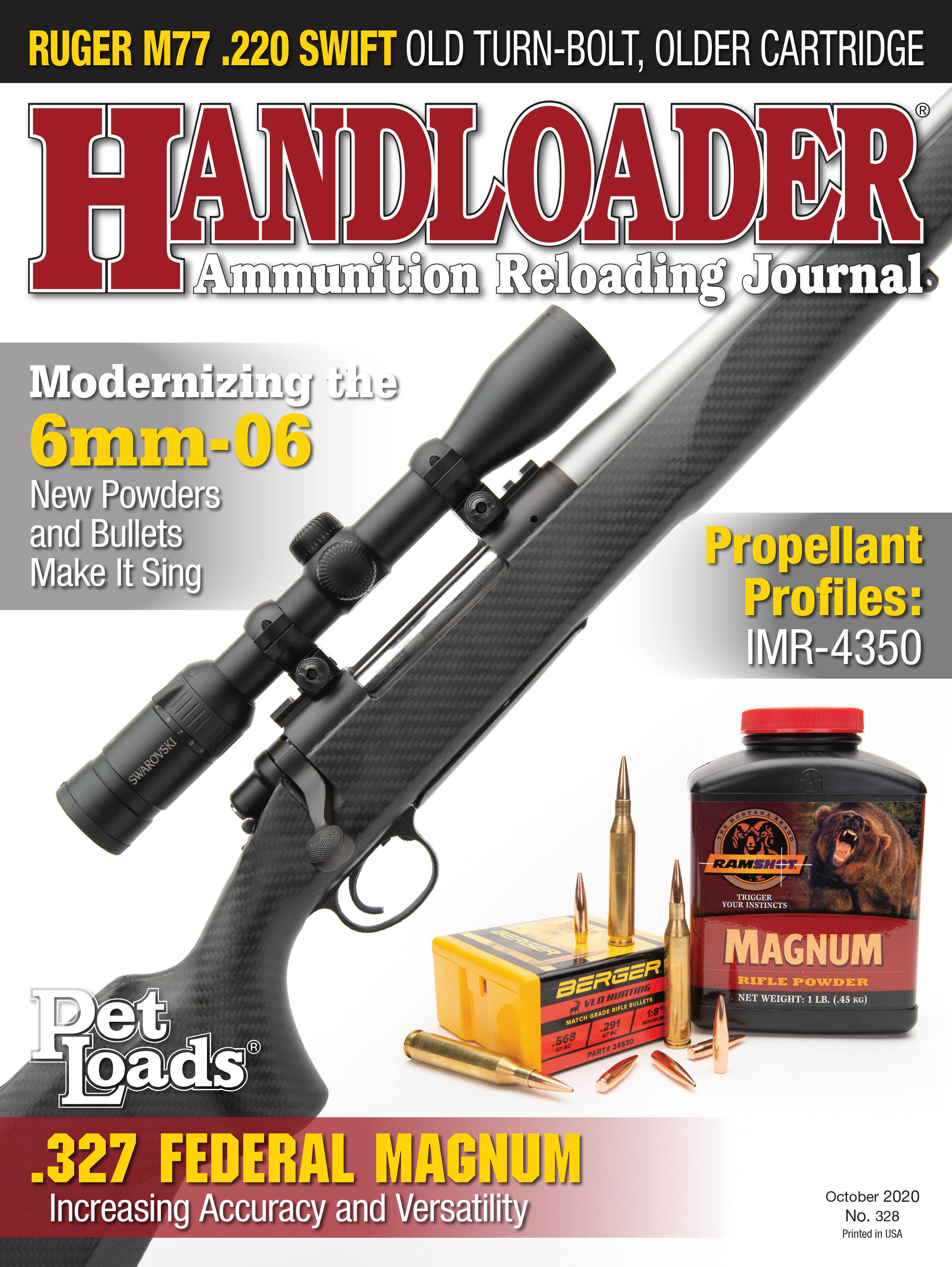
.jpg)